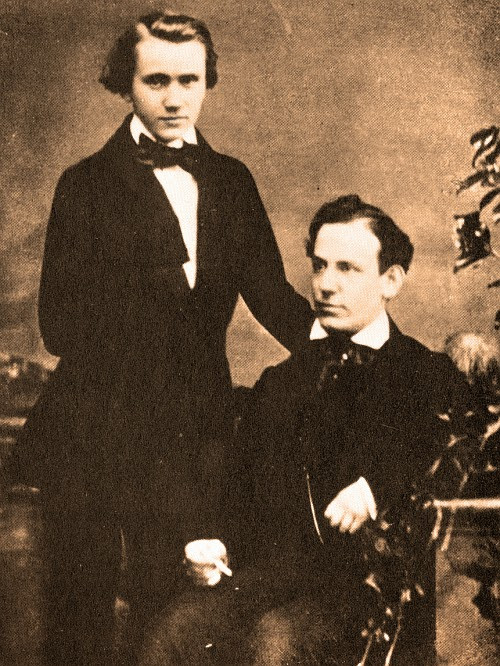Brahms’ Hungarian Dances are celebrated worldwide, and among them, Hungarian Dance No. 5 stands out as a truly iconic piece. This vibrant composition is part of a set of 21 dances inspired by the rich tapestry of Hungarian folk music. This genre itself is a fascinating blend of musical traditions from Hungarians and minority groups living in surrounding regions like Poland, Czech Republic, and Croatia. Originally composed for piano, these dances, including the beloved No. 5, were later masterfully arranged for full orchestra by Brahms himself and other talented composers, amplifying their sweeping sound. You’ve likely heard its captivating melody before…
Hungarian Dance No. 5 Performed by Hungarian Symphony Orchestra Budapest
[Insert Video Here – While I cannot directly embed a video, I would mention here in a real implementation that a video link would be placed here, similar to the original article]
A Continental Sound Sensation

Brahms wasn’t the only composer captivated by the allure of Hungarian sounds. The 19th century witnessed a surge of musical interest in this genre, largely ignited by Franz Liszt’s influential 19 Hungarian Rhapsodies. Brahms’ own foray into this captivating musical landscape was fueled by a couple of key trends. Firstly, piano pieces for four hands, requiring two players at one piano, were reaching the height of their popularity. Imagine the spectacle of four hands dancing across the keys! Secondly, there was a growing demand in European taverns for music reflecting the vibrant sounds of newly emigrated minority cultures, creating the perfect stage for these energetic compositions.
The Spark of Friendship: Brahms and Reményi

The true muse behind Brahms’ Hungarian Dances emerged from an earlier, serendipitous encounter with Hungarian violinist Ede Reményi. Interestingly, Reményi and the renowned violinist Joseph Joachim (for whom Brahms later composed his Double Concerto for Violin and Cello) shared the same teacher. Years after first witnessing Reményi’s captivating performances, a young, twenty-year-old Brahms became his piano accompanist. This role led Brahms on tour with Reményi, immersing him in the authentic sounds and spirit of Hungarian musical heritage.
Fueled by this firsthand experience, Brahms began to compose his own interpretations of Hungarian folk music. Out of the 21 dances, only Nos. 11, 14, and 16 are confirmed to be entirely original Brahms creations. Despite this, the entire set of Hungarian Dances, particularly Hungarian Dance No. 5, has become some of his most beloved and frequently performed works. Within these dances, Brahms skillfully captured the essence of csárdás and verbunkos, traditional Hungarian folk dances. These styles are characterized by their dramatic shifts in tempo, lively rhythms, and dazzlingly virtuosic passages that sweep listeners away.
The term csárdás is actually an umbrella term for a variety of Hungarian folk dances, each with unique regional variations in name, structure, and performance style. These dances are performed by both men and women. Women often wear traditional wide skirts that dramatically billow out as they twirl and spin – a visually stunning element often seen in performances.
Verbunkos, the older dance form, has its roots in 18th-century Hungarian military tradition. The word “verbunk” comes from the German “werben,” meaning “to recruit.” To attract young men to enlist, military units would organize grand celebrations filled with food, drink, and, of course, dancing. Officers, led by their sergeant, would take center stage, showcasing impressive displays of stomping, high kicks, spur-clicks, and heel slaps. Potential recruits would gather, drawn in by the spectacle, and as the verbunkos reached a fever pitch of energy, they would often be pulled into the dance itself, sometimes finding themselves effectively enlisted with a handshake amidst the excitement.

Nearly 150 years later, Brahms’ music, especially Hungarian Dance No. 5, remains as vibrant and captivating as it was in its early performances in European taverns and salons. Encoded within its black and white notation is a powerful homage to Hungary’s diverse history and people. Its lively, swinging melodies continue to rouse and excite audiences worldwide. Just be mindful whose hand you shake – you might just find yourself swept off your feet by the rhythm!
Explore Some Memorable Hungarian Dances featuring Charlie Chaplin, Looney Tunes, and a touch of French humor.
Hungarian Dances Nos. 5 and 6 were featured on BRAHMS FEST previously held at the Lesher Center for the Arts in Walnut Creek. Check their website for future performances.

